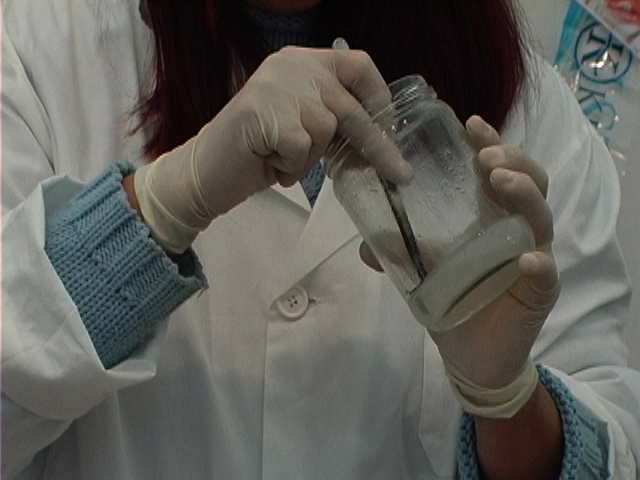|
Webcatalog | Science teaching festival |
Plant in vitro Culture and Propagation in Agar A procedure to regenerate plants genetically identical to the starting one. Agar, agarose and alginates can be used as a solid support for the growth of cells of bacteria, animals or plants. In fact, the cells and the tissues of many organisms are able to multiply and to form new organisms, if they are grown in the proper environment in presence of all the needed nutrients. The "in vitro" culture technology of plant cells is simpler than that of animal cells. A culture medium containing all the nutritive elements (salts and vitamins, sugars) must be prepared and dispensed in jars where to insert a plant tissue explants. The culture is then maintained in proper conditions of light and temperature that vary from one case to another. Within days/weeks the growth of undifferentiated calli or differentiated tissues (buds, roots, etc) will be observed. It is possible with this procedure to regenerate the whole plant, genetically identical to the starting one. Material: Glass jars, Plant tissues, Culture medium, Agar powder, Sucrose powder, Autoclave, Bleach, Beakers, and Bunsen burner. Prepare the plant culture medium. It is convenient to use a commercial formula of lyophilized Murashige and Skoog medium to which to simply add water and sucrose (3g/liter of medium) as carbon source. Add agar (0.5-0.8%) to the medium. Sterilize the utensils the agar-medium, and the jars putting them for a 21 minutes cycle in autoclave or in a pressure cooker. Let the medium cool till 45-50°C and dispense the medium in the jars when the agar is still liquid. Sterilize the plant tissue explants incubating them in beakers using diluted (1/10) commercial bleach (sodium ipoclorite, 40% solution) for 15 minutes. When the agar in the jar has solidified insert 2-3 plant tissue explants. All the procedures must be done under sterile conditions. If possible use a sterile air cabinet or operate on a clean bench, far from wind and dust, always working near to a Bunsen burner, so that the area could stay aseptic. In laboratories for in vitro plant propagation, as those of the CNR-IGV in Portici, tissue cultures are maintained in growth chambers at controlled light and temperature conditions.
|
|||

|
|||
See movie
|
|||